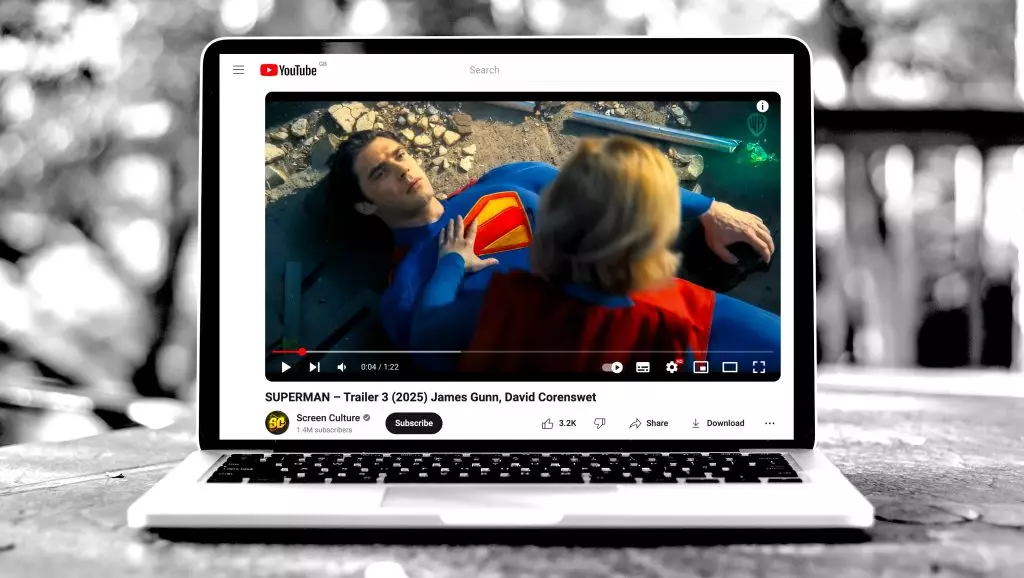In an age where artificial intelligence and creative content converge, the film industry is witnessing a rapid transformation. Platforms like YouTube have become the battleground for creativity against authenticity. Recently, two popular channels, Screen Culture and KH Studio, were stripped of their monetization privileges by YouTube, exposing a crucial debate surrounding intellectual ownership, authenticity, and the ethical implications of AI-generated content. These decisions reflect a broader concern about the proliferation of content that, while innovative, may straddle the thin line between homage and infringement.
Fake Trailers: Clever or Deceptive?
Both Screen Culture and KH Studio have garnered millions of views by crafting fake movie trailers that leverage AI technology, creating visually stunning yet misleading representations of existing movie franchises. Take, for instance, Screen Culture’s depictions of upcoming superhero films that closely mirror official trailers while injecting AI-generated imagery to titillate fan interest. These creations beg the question: at what point does creative expression become a tool for deception?
Many argue that these fake trailers serve as an imaginative exercise—an engaging way for fans to speculate and dream about what could have been. On the other hand, the ethical ramifications cannot be ignored. The blending of original content with AI manipulation not only risks muddying the waters of artistic ownership but also poses a challenge for major studios trying to maintain the integrity of their brand. The oscillating nature of creativity and ownership in the digital age demands a nuanced dialogue that considers both innovation and the preservation of intellectual property rights.
YouTube’s Dilemma: Balancing Creativity with Policies
In response to the controversy, YouTube has enacted a clampdown, citing violation of specific monetization policies designed to safeguard originality and prevent content designed purely for virality. The platform’s guidelines assert that creators must significantly alter borrowed material to make it their own, while also prohibiting content deemed misleading. However, Screen Culture’s founder, Nikhil P. Chaudhari, defends his channel, emphasizing a dedication to speculative storytelling over misrepresentation. So where does the platform draw the line?
YouTube’s actions reveal a deeper tension between algorithmic promotion and creative innovation. The platform has faced scrutiny for allowing AI-generated or manipulated content to thrive, often surpassing official trailers in viewership. Can a platform built on democratized creative expression effectively regulate itself while simultaneously catering to the demands of both creators and larger studios? This dilemma highlights the necessity for YouTube to reevaluate its policies and consider the changing landscape of content consumption in an age heavily influenced by AI.
The Studios’ Silent Play
Amid this controversy lies the involvement of major Hollywood studios who, instead of outright condemning the unauthorized content, seem to be playing a strategic game. Insiders suggest that companies like Warner Bros. and Sony recognize the value in the traffic generated by these channels, as many viewers are likely to seek out official content thereafter. By insinuating their interests through YouTube’s mechanisms, studios appear to be seeking a form of indirect control. This fosters a complex relationship between the unofficial creator and the corporate giant, raising ethical questions about the value placed on creative expression versus corporate interests.
The implications of this unspoken agreement extend beyond mere financial gain. The rise of AI in content creation invites endless “what if” scenarios that can enrich discussions around film and media while also misleading audiences. This duality complicates the narrative, forcing us to confront our expectations as consumers in an increasingly sophisticated digital age.
Fan Engagement or Fan Manipulation?
Channels like KH Studio attempt to engage audiences through fictional scenarios that ignite imaginations and fuel fan discussions. The creator behind KH Studio emphasized that their goal is not to mislead; instead, it’s to spark curiosity. Yet their appeal lies directly in the allure of what existing franchises already offer, blurring the line between homage and expectation. The question remains: are fans truly engaging with this content in constructive ways, or are they simply being misled by captivating images wrapped in the guise of official material?
This interrogation does not have straightforward answers. What is clear, however, is that as technology advances, our understanding and frameworks for evaluating creativity must evolve. Balancing the spirit of innovation with the respect due to original creators and their works is paramount—both for the future of content creation and the integrity of the industries behind it.

